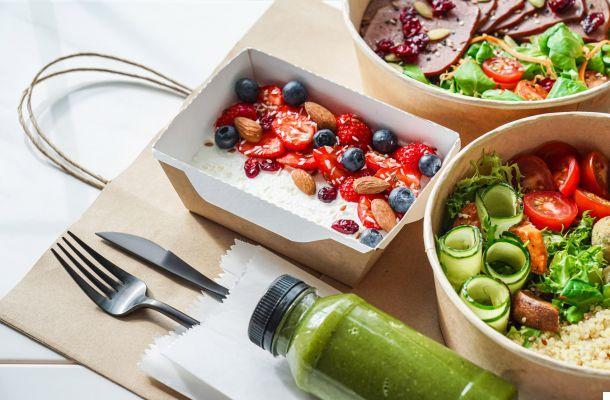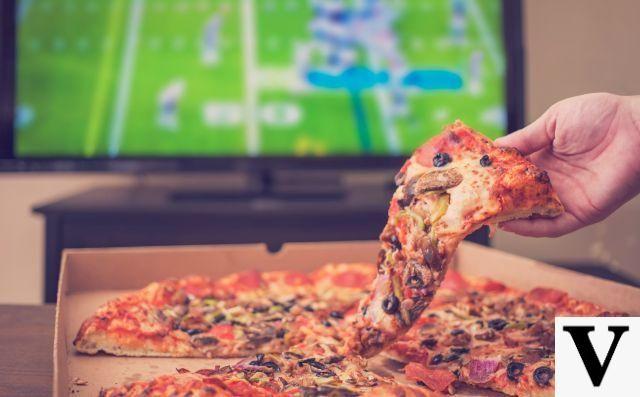
Sanitation obligations, space restrictions, forced closures, limitations of time slots ... for many restaurateurs, at alternate times, guarantee the Delivery has become the only possible solution to overcome this difficult period. Moreover, many of their customers have discovered how convenient it is to have food brought home, ready to be enjoyed in peace, perhaps enjoying their favorite series on television. And the fact that you can limit yourself to a few clicks of the mouse to choose the restaurant, decide the menu and pay for it directly online, helps to make the restaurant even more attractive. food delivery and to make it a habit destined to remain even after the pandemic is over. But if the convenience of home delivery is not discussed, it is right to ask yourself a few questions about the quality and food safety of what is delivered to us ...
Food delivery, how to avoid the Coronavirus risk
Let's start with a reassuring note: Covid transmission does not occur via food. The virus, unlike bacteria, does not develop on food and in any case is destroyed by normal consumption temperatures. At the most, it can happen that the food becomes a vehicle of the virus if it is superficially contaminated by the operator, but it is difficult for Covid to be able to transfer into the airways which are the true path of contagion by eating.
Rather, attention must be paid to the external surfaces of the packaging in which the food reaches us, but just wash your hands well after taking them out and transferred to the plate to reduce the risk.
It is equally important to keep precautions high at the time of delivery: mask and arms extended to keep safe distances, even better if the meal has been paid in advance online and if you avoid the physical exchange of money from hand to hand.
Beware more of staphylococci and salmonellae
If the virus is not a cause for great concern, we must not forget that food can cause other problems and even serious ailments, if we do not consume it in perfect hygienic conditions. It is mainly from the development of bacteria such as staphylococci and salmonellae that we must look at and there are two words that we must keep in mind: time and temperature.
Once the food has been cooked, it becomes an ideal ground for the rapid development of the first bacteria that reach it and it should be consumed as quickly as possible.
Hence, punctuality in delivery also becomes important as a safety factor: a dish that arrives cold now and with almost an hour of delay can carry a very high number of germs and pose a real risk. If we don't want to send it back, the thing to do is heat it without just warming it up, but bringing it to temperatures above 75 ° C (in practice it must burn) in order to sanitize it again.
The right temperature is essential
Speaking of temperature, the cooked foods we ordered to be eaten hot, such as spaghetti or fried, should be transported at temperatures above 60 ° C, while the raw ones, or in any case to eat cold, should not go above 10 ° C. If you work well and use insulated food containers, these conditions can be maintained for a reasonable time. But not all of them work well ...
The demonstration comes from a recent survey conducted by Altroconsumo in collaboration with the Zooprophylactic Institute of Piedmont, Liguria and Valle d'Aosta. By placing 60 orders on 6 different food delivery platforms, both national and local, operating in Milan and Turin, it was found that only a third of the hot dishes requested arrived at their destination at a temperature above 60 ° C, while the average of the temperatures recorded for those to be delivered cold was even 23,5 ° C (in two cases they reached above 30 ° C), a decidedly risky temperature, to the point that in 38% of the deliveries examined a level was not reached sufficient hygienic safety.
It goes without saying that if food delivered at the wrong temperature is eaten immediately, the risk of contracting ailments remains low, but if you keep the leftovers, then problems can actually arise.
Beware of "do it yourself" home delivery
Large food delivery platforms are aware of the hygienic risks associated with transport and generally pay enough attention to avoid them, but things change if we resort to "DIY delivery" improvised by restaurateurs.
When food is delivered to us, we need to check that they are well separated, in different bags, foods to eat cold such as sushi and those to be enjoyed hot such as soy noodles.
Also, make sure that they are all placed in specific containers for food (check for the presence of the fork and glass symbol) and that the containers themselves are tightly closed. This concerns above all sauces: better if they are delivered in single-dose sachets instead of in plastic trays with a “ballerina” closure. And if the sushi arrives lukewarm or if we find sauce or gravy scattered in the bag, it is better to send everything back ...
Pizza: watch out for cardboard
 Firmly in first place among the most requested foods, pizza arrives in the unmistakable cartons. However, they can hide pitfalls for our health: the heat and humidity of the pizza can cause the migration of harmful substances from the cardboard, if this is not done according to the rules. The law provides that the part in contact with food must be of very pure cellulose and not made from recycled paper, to avoid ink residues and other unhealthy compounds.
Firmly in first place among the most requested foods, pizza arrives in the unmistakable cartons. However, they can hide pitfalls for our health: the heat and humidity of the pizza can cause the migration of harmful substances from the cardboard, if this is not done according to the rules. The law provides that the part in contact with food must be of very pure cellulose and not made from recycled paper, to avoid ink residues and other unhealthy compounds.
In reality, however, this is not always the case because many cartons come from other EU countries where the rules are less stringent. Here then is a first thing to check, in addition to the presence of glass and fork symbol indicating the destination "for food", is the carton color on the inside: prefer the brown color to the white one, because it is not subjected to whitening processes.
In any case, an important rule is that of do not reheat and eat the pizza in the carton, but transfer it to the plate: a test conducted last year by the monthly Il Salvagente found in two out of three pizza containers the presence of high concentrations of Bisphenol A and phthalates, compounds that favor some types of cancer.


























